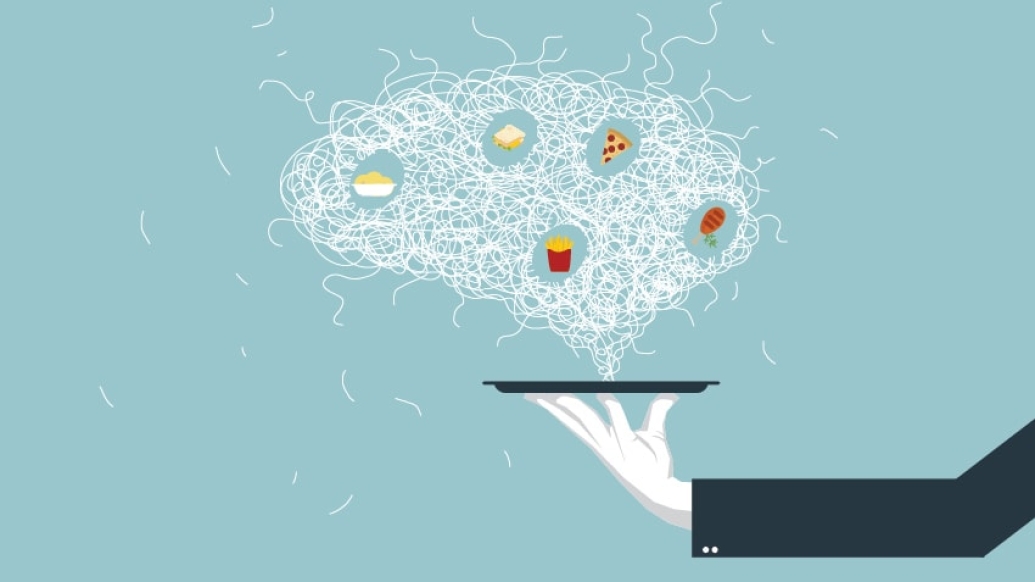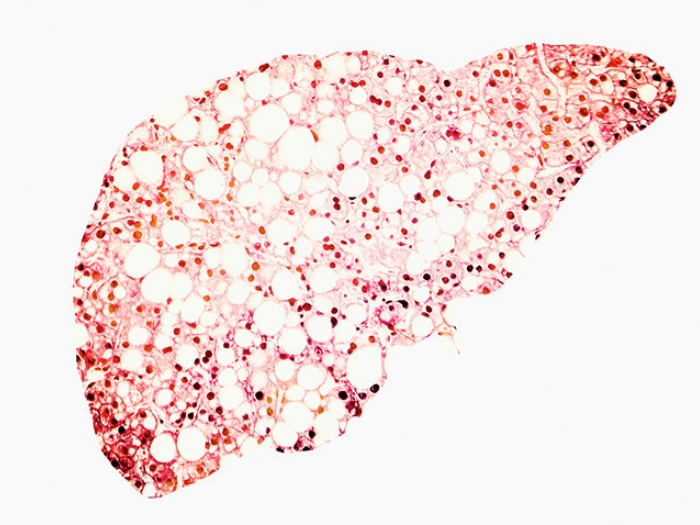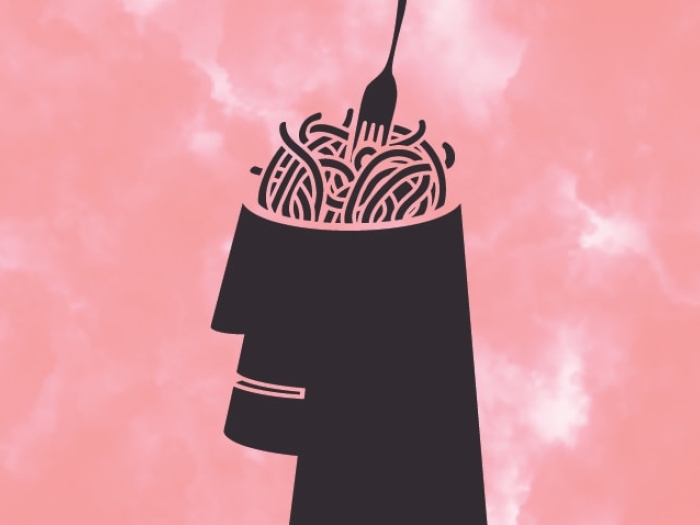A new study finds that obesity-prone rats respond more strongly to food-related cues, including specific changes in cells of the same brain area linked to addiction.
11:00 AM
Author |

The rustling of a potato chip bag. The smell of pizza from the break room. The glimpse of a cookie wrapper in the back of the cupboard. The catchy radio jingle for a candy bar.
MORE FROM THE LAB: Subscribe to our weekly newsletter
Food-related cues come at us from morning until night, and some of us seem powerless to resist temptation. Others, however, can ignore them — or at least stop themselves from responding.
Now, a new study in rats may help explain these differences in people — and how they relate to the obesity epidemic that affects one-third of all people worldwide. Performed at the University of Michigan Medical School, the study is published online in Neuropharmacology.
The study involved both rats that came from a line that had been specially bred for a tendency to become obese, and rats from a line with normal weight tendencies. The obesity-prone rats in the study were fed diets that didn't allow them to become obese. But even so, they showed much stronger food-seeking behaviors in response to food-related cues that they'd learned to associate with a food treat compared with rats whose family trees were lean.
Those differences, researchers found, extended deep into the rodents' brains, into the cells of the "reward center" called the nucleus accumbens.
When obesity-prone rats learned to recognize a certain sound as the cue for food availability, a key receptor appeared more frequently on the surface of certain cells in the reward center. But similar changes in this receptor were not seen in obesity-resistant rats.
What's more, when researchers used a drug to block the receptors, called CP-AMPA receptors or CP-AMPARs, the food cue no longer triggered the obesity-prone rats to seek out food — even though they still showed signs that they recognized the cue.
It was as if they had switched from eagerly trying to trace the smell of pizza and go find its source to smelling it and not even getting up to find it.
Although a drug that could do the same for humans isn't yet available, the U-M researchers hope their work will help form the basis for new understanding of human obesity's roots in our genes, learned behaviors and the brain.
'A huge step' to understanding obesity
The rat model could offer important clues to outsmarting obesity, says Carrie Ferrario, Ph.D., an assistant professor of pharmacology.
SEE ALSO: Opinion: Lack of Access to Obesity Care Highlights Stigma and Disparity
"We know that people who are really attentive to food cues in their environment end up eating more and having more food cravings," she says. "But these obesity-prone and -resistant rats give us a basic-science model to figure out the neural and psychological differences that drive overeating, even before obesity sets in.
"Understanding this would be a huge step to improve obesity prevention."
Ferrario, who has published a number of papers on animals' responses to food cues, is senior author of the new Neuropharmacology paper with U-M neuroscience graduate student Rifka Derman. Ferrario is also a member of the Michigan Diabetes Research Center, an external member of the Modern Diet and Physiology Research Center at Yale University, and a collaborator with several U-M and University of Wyoming researchers.
The new research builds on previous studies from her lab showing that feeding obesity-prone rats a diet equivalent to a junk-food-heavy human diet led to an increase in the number of CP-AMPARs in their nucleus accumbens.
In addition, in collaboration with Kent Berridge, Ph.D., and Michael Robinson, Ph.D., of the U-M Department of Psychology and Wesleyan University, respectively, Ferrario also found that the rats that showed the strongest responses to cues that a tasty treat was becoming available were the ones that went on to gain the most weight.
The new study is the first time that neuroscientists have shown that the two are linked: Changes in CP-AMPA receptors in the nucleus accumbens are involved in food-seeking in response to a cue.
We can use this model to figure out the neural and psychological differences that drive overeating before obesity sets in. Understanding this would be a huge step to improve obesity prevention.Carrie Ferrario, Ph.D.
Pavlov's rats
Anyone who took a class in introductory psychology remembers the story of Russian scientist Ivan Pavlov and his dogs that began to salivate when he entered the room because they associated his arrival with their suppertime.
Ferrario and Derman used the same basic premise to train the rats in the new study. First, they trained them to press a lever to get food pellets — although they restricted the obesity-prone rats to a calorie intake that kept them from gaining too much weight.
Then, they trained the rats using two different sounds, one of which was played just before the rats were given food without pressing a lever, the other played with no association to food.
Both types of rats learned to press levers to get food, and to expect food to appear in their food tray when the cue came on. But when the researchers compared the obesity-prone and obesity-resistant rats in their response to the cue, they found that the obesity-prone ones were more likely to press the lever in response to the "food sound" — even though no food came when they kept pressing.
Translated to human behavior, it's as if they smelled pizza, and got up to look for it and kept searching, even when no pizza was found.
Seeking food in response to a learned cue is called Pavlovian-to-instrumental transfer, or PIT. But the obesity-prone rats showed much more motivation to seek the food when they heard the cue.
That difference alone is interesting, says Ferrario. What happened in the rats' nucleus accumbens regions, however, was even more interesting: The obesity-prone rats' brains changed so that they have more CP-AMPA receptors on the surface of their cells in the nucleus accumbens.
Because CP-AMPARs act as pores to allow calcium ions to pass into and out of cells, this change is significant for cell-to-cell communication, says Ferrario. Though her experiments specifically looked at the nucleus accumbens, she is working with other researchers, including Travis Brown at the University of Wyoming, to understand if the same receptor plays a role in other brain regions in relation to obesity-related behaviors, and how other regions like the prefrontal cortex are involved.
The fact that blocking this calcium channel with a drug caused the obesity-prone rats to stop seeking food in response to the cue is further evidence of its importance.
More than drug intervention needed
The same receptors have also been shown to be linked to cocaine addiction, a discovery found in work led by Ferrario's mentor, Marina Wolf of the Rosalind Franklin University of Medicine and Science. And the nucleus accumbens has long been known to be involved in the perverse cycle of addiction to cocaine and other drugs of abuse, hijacking the region's importance in the feeling of reward from a behavior such as eating, and the motivation to seek further rewards of the same type.
SEE ALSO: Fitness vs. Fatness: Which Matters Most?
The role of CP-AMPARs in the nucleus accumbens, and in the circuits that feed into that region, in the context of food and obesity needs much more research, says Ferrario. Since these initial experiments were done with a healthy diet and calorie restriction, she's interested in the impact of a "junk food" diet on behavior and the receptors. She's also interested in the impact of weight gain and weight loss in relation to female hormone cycles, since all the rats in the current paper were male.
Changing behaviors in response to food cues in humans won't be as simple as delivering a drug directly into the brain. That's just not a feasible solution, says Ferrario.
"Part of the challenge in obesity is that people can be successful in losing weight, but it's keeping it off and having a healthy lifestyle that is the challenge," she says. "Part of that is the psychological aspect; they have to exert more effort and take additional steps to avoid unhealthy behaviors. And that may explain why it can be so hard to change these behaviors."
A big issue for obesity-prone people — and animals — is their surroundings.
"This cue-triggered food-seeking that has evolved over time is working to our detriment, because we are in an unhealthy food environment," Ferrario says. "We're not saying that this means that the fate of those who are prone to obesity is predetermined and set in stone. But we need to understand how individual differences may contribute to cue-triggered eating, how that interacts with weight gain, and how that might influence the behavioral interventions that would work best.
"And some of that understanding could actually help individuals use their cognitive control to actively suppress cravings triggered by food cues."
This work was supported by the National Institute of Diabetes and Digestive and Kidney Diseases, and the National Institute on Drug Abuse, both part of the National Institutes of Health (DK106188, DA007281, DK111194-01).

Explore a variety of healthcare news & stories by visiting the Health Lab home page for more articles.

Department of Communication at Michigan Medicine
Want top health & research news weekly? Sign up for Health Lab’s newsletters today!





